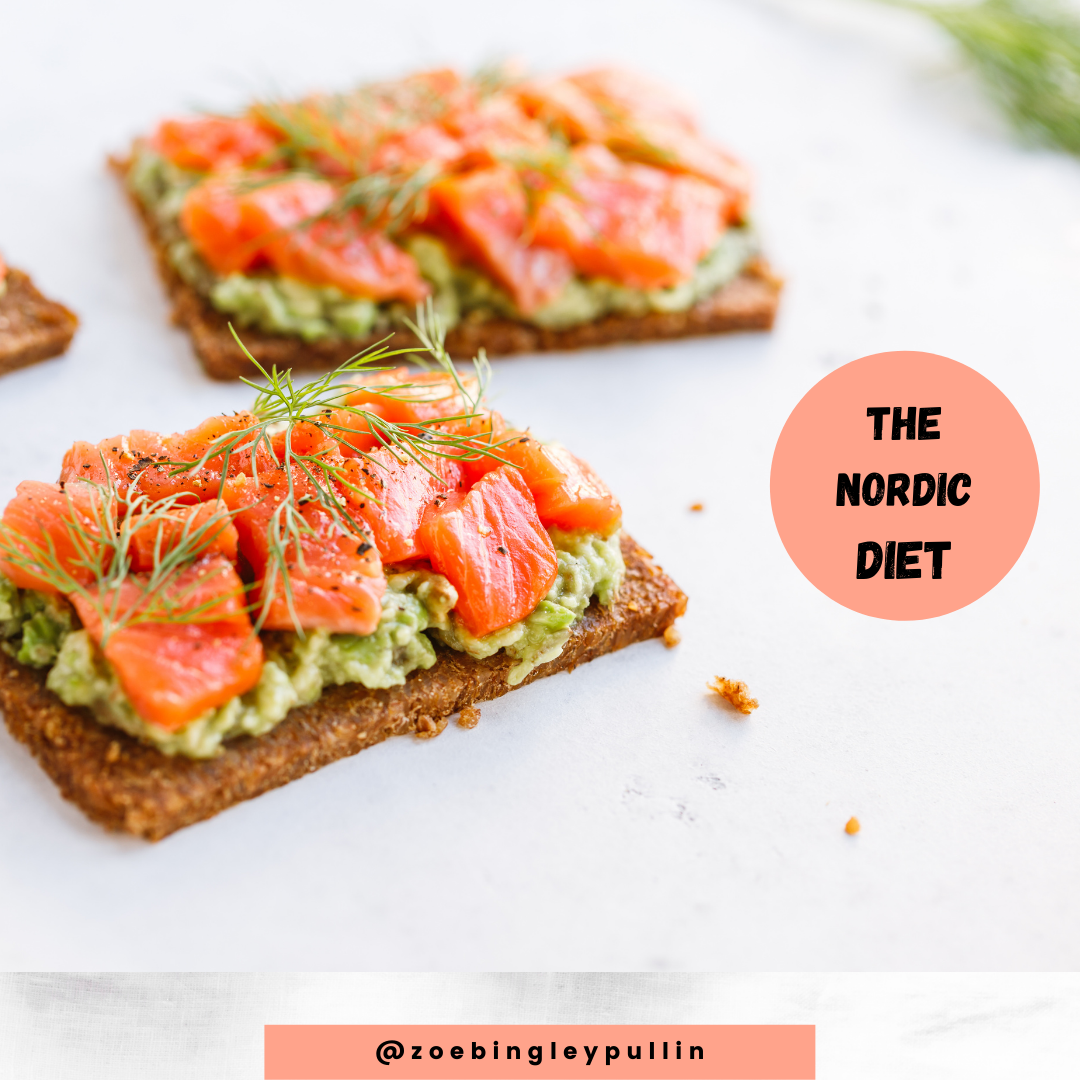What is the Nordic diet?
The Nordic diet is as named, based on the diet consumed in Nordic countries. This means it is based off ingredients easily found and accessible in the Nordic region including – berries, cabbage, fish, seafood, rapeseed oil, oats, rye and barley.
What are the potential health benefits of the Nordic diet?
The common foods consumed as part of this diet are low in saturated fats, low in trans fats, high in antioxidant compounds and fibre. This is very similar to the Mediterranean diet and therefore, the Nordic diet is linked to similar health benefits such as:
- Weight management;
- Improved cholesterol management;
- Blood sugar regulation;
- Reduced risk of cardiovascular disease.
What’s the latest research say?
A recent study developed ‘The healthy Nordic Diet’ which put together diets based on items easily available and traditionally consumed in the Nordic regions (as below) to assess the impact of this diet on glucose metabolism, blood lipid profiles and inflammatory markers in the absence of weight loss.
An example of the foods consumed as part of this diet are listed below:
– whole-grain rye or wheat bread
– whole-grain rye crispbread
– oat flakes, rye flakes or muesli
– frozen berries (mixed)
– whole berries (cranberries, blackcurrants or raspberries)
– dried berry powder (blueberry or blackcurrant)
– fish (tuna, herring, salmon or mackerel)
– nuts (hazelnuts, almonds, walnuts, pine nuts)
– yoghurt (3.5% fat) based on Lactobacillus acidophilus.
– vegetable oil-based spread, liquid margarine and rapeseed oil
The study involved 200 overweight participants with features of metabolic symptoms at a mean age of 55 years. The participants were divided into two groups:
Group 1: consume foods according to Nordic dietary recommendations (as above); and
Group 2: control group, consume their habitual diet based on the average Nordic diet.
Specifically, participants in group 1, were asked to increase their intake of rye, barley and oats, berries, fruit and vegetables. Conversely, participants in group 2 were asked to consume common low-fibre wheat cereal products like refined wheat bread and pasta, rice and butter and not to moderate their intake of fruit and vegetables.
The study duration was 6 months and group 1, compared to the control group, showed:
- Lower cholesterol levels;
- Lower overall levels of both saturated and unsaturated fat in the blood; and
- Better regulation of glucose.
The researchers put most of these benefits down to the fat composition of the Nordic diet. Specifically, being higher in omega-3 and omega-6 unsaturated fats and lower in highly processed foods and saturated fats from animals.
Day on a plate
If you are interested in shifting your diet towards this pattern of eating, here is an example of how this diet translates to a day on a plate:
Breakfast:
Avocado on wholegrain rye toast with a side of fresh berries.
Snack:
Natural yoghurt with grated pear/apple and flaxseeds.
Lunch:
Rye crispbreads topped with low fat ricotta cheese, tomato, cucumber and dill.
Snack:
Raw fruit (eg pear, apple, berries) with raw nuts/seeds
Dinner:
Grilled salmon with roast veggie and barley salad.
Journal Reference:
- Gözde Gürdeniz, Matti Uusitupa, Kjeld Hermansen, Markku J. Savolainen, Ursula Schwab, Marjukka Kolehmainen, Lea Brader, Lieselotte Cloetens, Karl-Heinz Herzig, Janne Hukkanen, Fredrik Rosqvist, Stine Marie Ulven, Ingibjörg Gunnarsdóttir, Inga Thorsdottir, Matej Oresic, Kaisa S. Poutanen, Ulf Risérus, Björn Åkesson, Lars Ove Dragsted. Analysis of the SYSDIET Healthy Nordic Diet randomized trial based on metabolic profiling reveal beneficial effects on glucose metabolism and blood lipids. Clinical Nutrition, 2022; 41 (2): 441 DOI: 10.1016/j.clnu.2021.12.031
